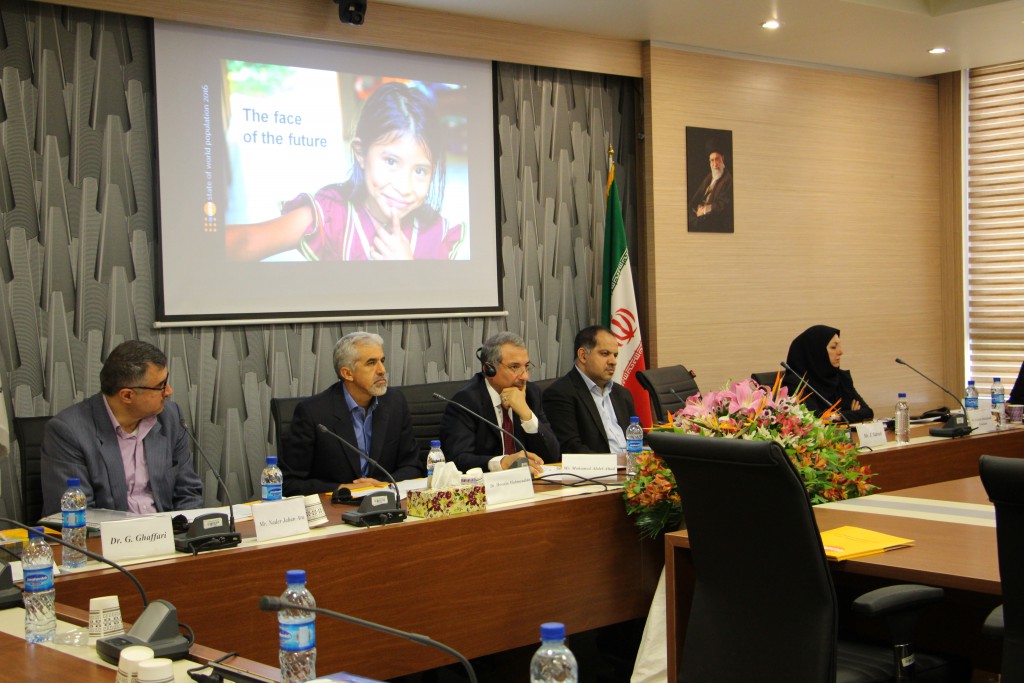About 4,700 vulnerable girls under the age of 18 are under coverage of the State Welfare Organization and receive various facilities, from healthcare and education to marriage.
“Girls comprise 49% of the 9,800 children under SWO coverage. They live in the organization’s 590 facilities across the country where basic facilities are provided,” said Habibollah Masoud-Farid, deputy head for social affairs at the SWO.
He made the remarks at the unveiling ceremony of the report on State of World Population 2016, compiled and released annually by the United Nations Population Fund (UNFPA), which was held Monday at the Tehran University of Social Sciences, IRNA reported.
The annual report titled ‘How Our Future Depends on a Girl at This Decisive Age’ is part of the projects that aim to accelerate progress towards the Sustainable Development Goals (2015-2030).
This year’s report addresses the challenges facing young females worldwide, with a focus on 10-year-old girls. An estimated 125 million 10-year-olds (or the SDGs generation) today comprise the largest number of young people in human history. Of these, over 60 million are girls, and 65 million are boys.

“The priority of SWO is with girls in the lower deciles of the society in both economic and social terms, and in rural and outlying areas of cities (marginalized population),” said Masoud-Farid.
Noting that countries across the world allocate about 2-4% of their GDP annually to comprehensive child development programs, he said this figure is proposed to be 1% in the next five-year economic and social development plan (2016-2021).
Early marriage, teenage pregnancy and other manifestations of deep-rooted gender inequalities undermine girls’ health and rights and threaten the ambitious global development agenda, the report warns. Many girls in that age bracket “are held back by social and cultural norms and discriminatory laws and practices” preventing them to develop and achieve future success.
In Iran, there are nearly 600,000 10-year-old girls at the moment. There are also nearly three million girls aged 5-9 and just over three million aged 0-4. Over the next 10 years (SDGs period) the country will see at least over six million girls aged 10.
Globally, one in three girls will experience violence in their lifetime, and many will experience it during adolescence, and about 62 million adolescent girls around the world are not in school today.
Early Investment Vital
Biased social norms, such as those that perceive sons are a better investment in a family’s future, result in school enrolment and completion rates that are higher for boys than girls.
“Girls bear greater household burdens than their male peers. An International Labor Organization survey showed that 10% of girls between ages 5 and 14 perform chores at least 28 hours a week,” said Monireh Basir, a senior expert at the UNFPA in Tehran.
“This is twice the amount of time that boys of the same age devote to chores.”
The report reveals that countries with the highest proportions of 10-year-olds in their population are more likely to have higher rates of income inequality. Gender parity values in secondary education are significantly lower in countries with larger proportions of 10-year-olds and child labor rates are higher in countries with larger proportions of 10-year-olds in the population.
Today’s 10-year-old girls have the potential to shape the future and improve the health and prosperity of their countries with investments in their education, empowerment and well-being.
The report provides an estimate of potential individual total income gains over the next 15 years resulting from investment in every 10-year-old girl in selected low and middle-income countries.
In other words, in 15 years, educated skilled female workers (today’s 10-year-olds) in Iran who have had the chance to finish secondary education and start working at the age of 18 at double the national minimum wage of the country, will earn an estimated $37,546. That is $19,690 more than the estimate for a scenario where parents choose not to invest in girls or choose to do so for a male offspring instead, and girls are forced to give up secondary education, marry early or start work at the national minimum wage of the country.
Measures Taken in Iran
Pointing to food poverty and malnutrition as one of the most important health challenges for girls in the country, Masoud-Farid said a plan in this regard was launched two years ago by the SWO for children under the age of six.

Under the $14 million plan (500 billion rials), about 200,000 children in rural areas and city outskirts are provided one hot meal a day containing 1,200 calories. The target population was determined by the Health Ministry in seven of the country’s most deprived regions.
“According to the Health Ministry’s nutrition improvement department, malnutrition has decreased by 50% since its implementation,” he underlined.
A workgroup has also been formed in cooperation with the Ministry of Labor, Cooperatives, and Social Welfare and the Bonyad Mostazafan (Foundation for the Oppressed and Disabled set up in 1979 by a decree from the late Imam Khomeini) to track and identify children who are out of school for various reasons.
Poverty and negligent parenting are two other critical issues crippling young girls. About 85% of children under SWO support are those with negligent or abusive parents. These children have at least one known parent who is considered disqualified for their state of poverty, severe mental disorder, addiction, and abusive behavior, he added.
Additionally, the hotline 123 was established this year to report cases of child abuse among other social emergencies. “We are desperately in need of child protective laws, for girls in particular, while lack of reliable data has made cases of child abuse more unreachable,” lamented Masoud-Farid.


